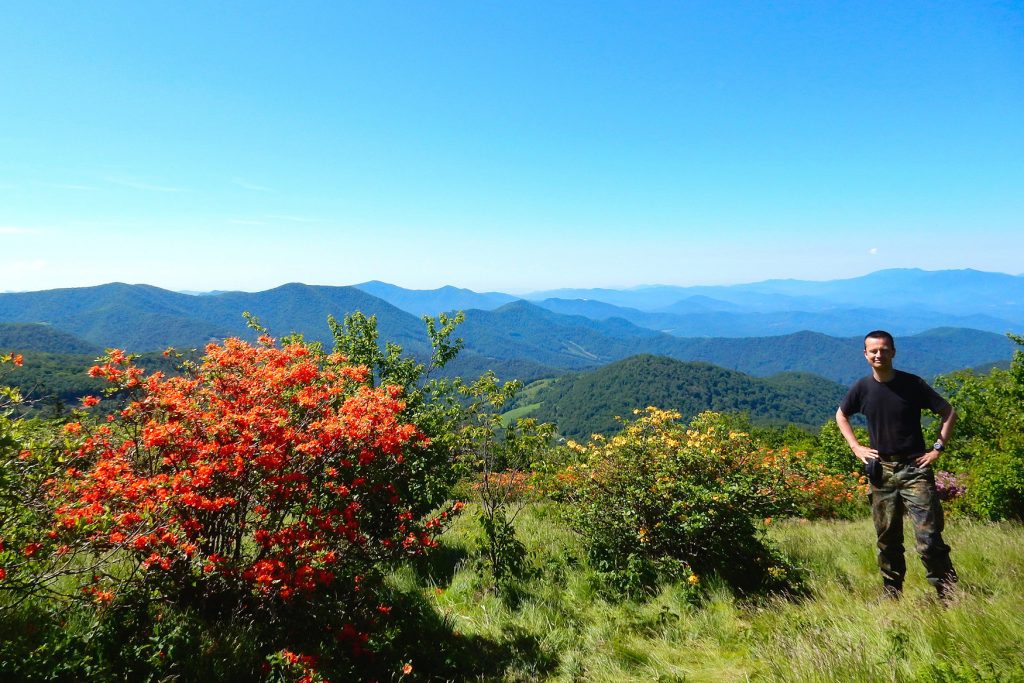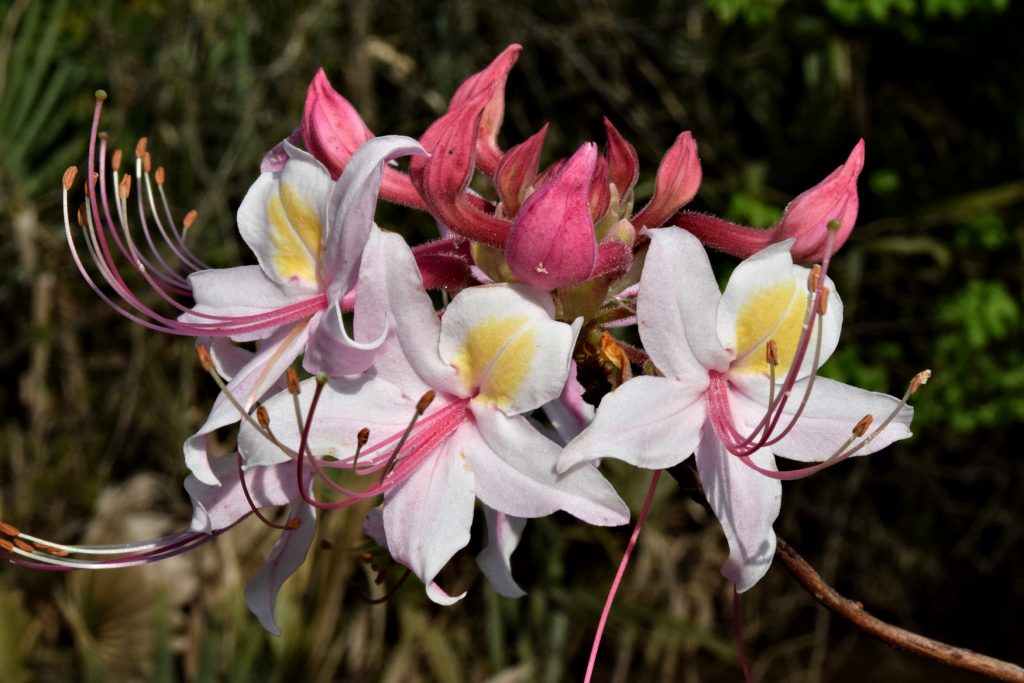Welcome to my website dedicated to the rhododendrons, that occur wild in the United States, as well as to some of their companion plants. These pages are meant to invite you to take part in the wonders and beauties of American rhododendrons. May they contribute to make these plants become more popular in Europe.
For many years I have been interested in American rhododendrons, especially in the deciduous azaleas. This interest is not only a horticultural but also a scientific one. In the meantime I am even involved in DNA studies with the University of Oldenburg. However, since I am living in Germany it has been very difficult to obtain these plants, because German and European nurseries do not specialize in them and mail order from the U.S. is not possible due to customs restrictions. Further the few clones offered here were sometimes misidentified. Everything changed several years ago, when Don Hyatt (McLean, VA) from the American Rhododendron Society invited me to join one of the trips that he and his azalea friends frequently do in the Appalachian Mountains in order to see as many azaleas in full bloom as possible. My enthusiasm increased when I saw the highly variable plants scattered across often beautiful landscapes. And then I was given numerous seeds. Finally I had reliable sources for all the gems that I took interest in and I started raising them from seeds. From that point on there was no stopping anymore and I have traveled ever since once or twice a year to the U.S. except during the corona pandemic.

Most of the American rhododendron species belong to the Pentanthera, a subgroup that is listed as a subgenus of the genus Rhododendron or just as a section of the subgenus Hymenanthes, depending on the author. Two Pentanthera also exist in the Old World. They are all better known as American azaleas or deciduous rhododendrons. They are characterized by high flower color diversity. From pure white to pink, magenta, red, orange and yellow, all shades are existing. Additionally many species have a more or less large, attractive yellow spot on their uppermost petal. The flowers of some species exhale a wonderful fragrance. In fall the leaves of many turn into beautiful shades of yellow, orange and red before they drop. There are a few species of rhododendrons in the U.S. that do not belong to the Pentanthera. However, since all these plants fit well together and also often occur together, I also give them space on my website.
In contrast to the Southeast Asian rhododendron species and hybrids that are mainly found in gardens here, many American ones are characterized by higher sun and / or heat tolerance, two features that should not be underestimated, especially in times of climate change. Here in central Europe nearly all grow extraordinarily well. Another plus is that the species do not all bloom at the same time and then make the garden appear as a green desert for the remaining 11 months of the year, as is unfortunately often the case with pure rhododendron gardens. For example, in my garden in the Upper Rhine Valley at the foot of Black Forest (USDA zone 7b with in recent years rather 8a) the flowering period extends over 5-6 months from early April (R. periclymenoides, R. canescens, R. vaseyi) to mid-August (R. prunifolium, R. arborescens “georgianum”) and into September (R. serrulatum).
I would like to thank all my friends in the US. Without you most of my travels and trips would not have been possible. Hopefully it will be granted to us to still do a lot together. There are so many more things out there to discover and explore!
Ralf Bauer
P. S.: Please understand, that most parts of this webpage are still under construction. Gradually it will become more and more complete. I have in mind to give English versions of all texts. However, this will take time. Momentarily I can provide translations only in the categories Welcome, Habitat Pictures / Travels, Publications, Plant Sources, Further Information and Imprint. Captions of gallery pictures cannot be translated at the moment. Once I have finished the Habitat Pictures / Travel part I intend to translate the texts given in the category Species. If you are using the English version of my webpage you will currently be directed to the German versions in category Species. Sorry for the inconvenience, but as I have already stated everything will need time. I am sure there are mistakes concerning English grammar and style. I will be pleased to get your corrections.

